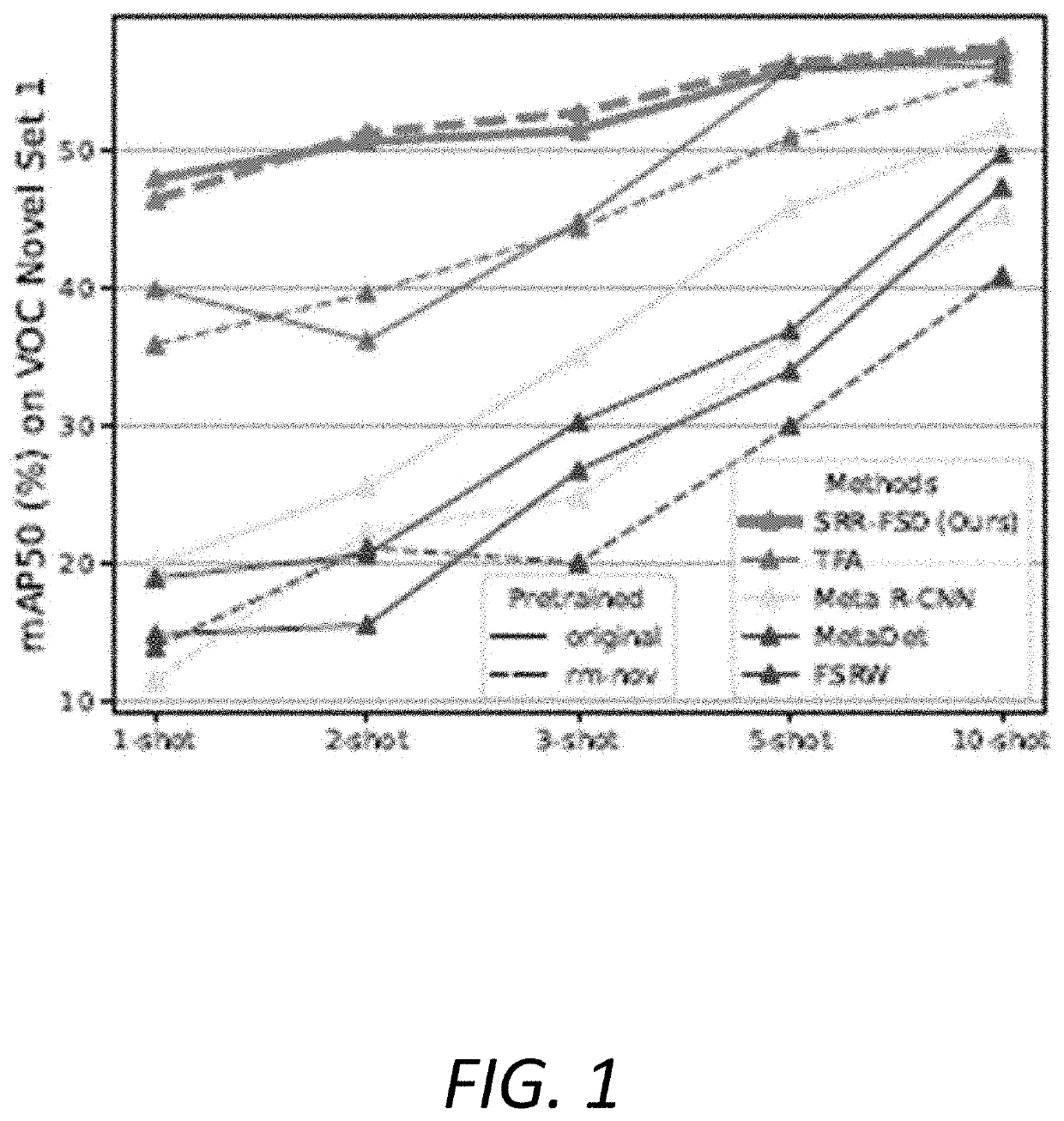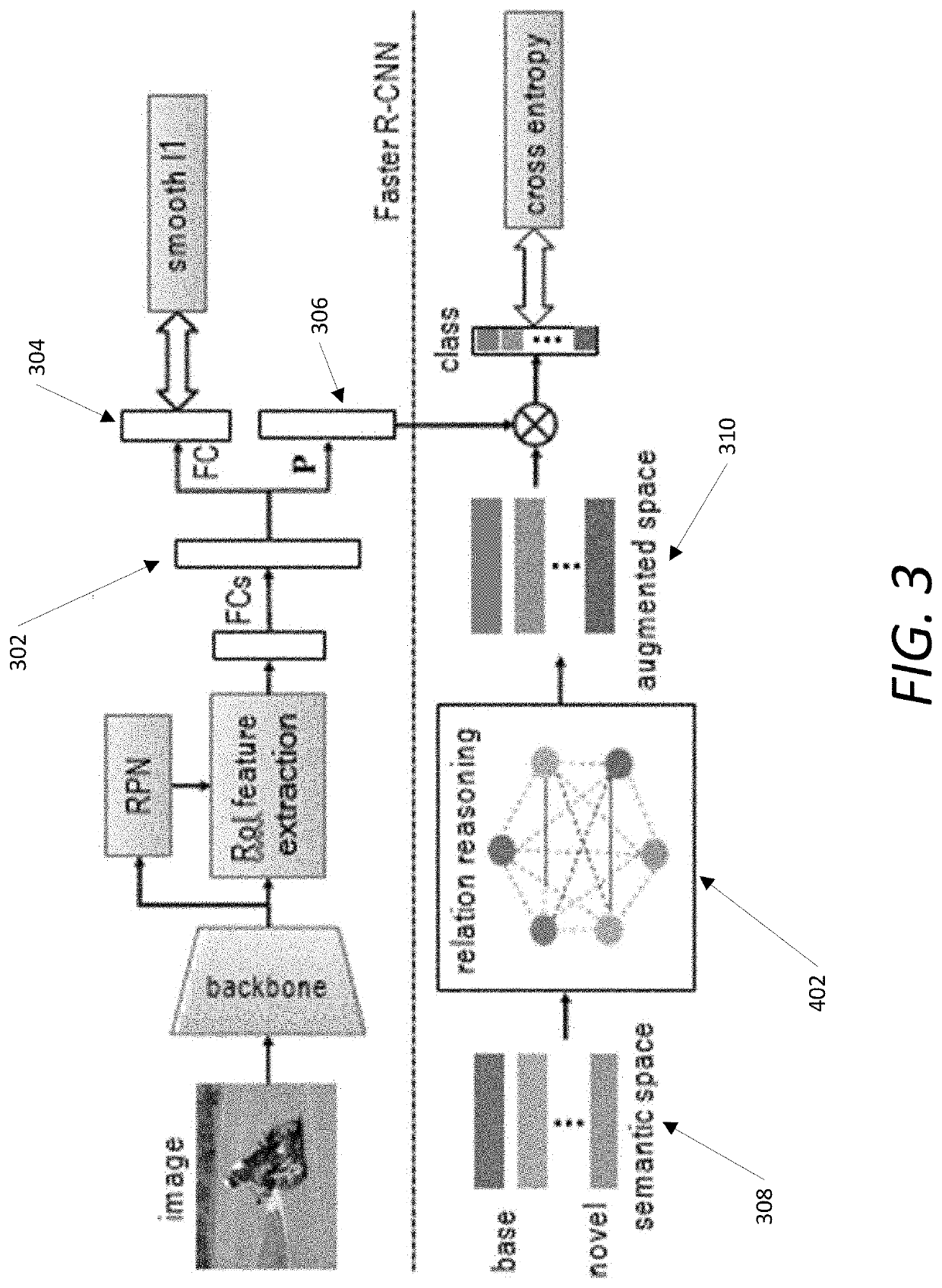Few-shot object detection using semantic relation reasoning
- Summary
- Abstract
- Description
- Claims
- Application Information
AI Technical Summary
Benefits of technology
Problems solved by technology
Method used
Image
Examples
Embodiment Construction
[0018]To understand SRR-FSD, it will first be useful to start with an explanation of prior art few-shot object detection. Then, building of the SRR-FSD comprises integrating semantic relation with the visual information in a Faster R-CNN and allowing it to perform relation reasoning in the semantic space. A two-phase training processes.
[0019]The conventional object detection problem has a base class set b in which there are many instances, and a base dataset b with abundant images. b consists of a set of annotated images {(xi, yi)} where xi is the image and yi is the annotation of labels from b and bounding boxes for objects in xi. For the few-shot object detection (FSOD) problem, in addition to b and b, it also has a novel class set n and a novel dataset n, with b∩n=0. In n, objects have labels belong to n and the number of objects for each class is k for k-shot detection. A few-shot detector is expected to learn from b and to quickly generalize to i, with a small k such that it ca...
PUM
 Login to View More
Login to View More Abstract
Description
Claims
Application Information
 Login to View More
Login to View More - R&D
- Intellectual Property
- Life Sciences
- Materials
- Tech Scout
- Unparalleled Data Quality
- Higher Quality Content
- 60% Fewer Hallucinations
Browse by: Latest US Patents, China's latest patents, Technical Efficacy Thesaurus, Application Domain, Technology Topic, Popular Technical Reports.
© 2025 PatSnap. All rights reserved.Legal|Privacy policy|Modern Slavery Act Transparency Statement|Sitemap|About US| Contact US: help@patsnap.com



